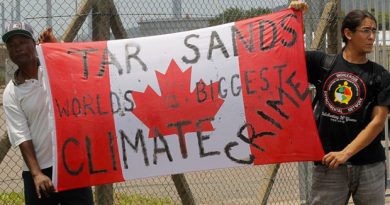Study doubles estimate for methane venting from shallow Siberian Arctic waters

Massive amounts of methane are being released from the East Siberian Arctic Shelf, twice as much as estimated just a few years ago, according to a new study led by Alaska-based scientists and published in the journal Nature Geoscience.
The study, led by Natalia Shakhova and Igor Semiletov of the University of Alaska Fairbanks’ International Arctic Research Center, puts the annual methane releases from the region at 17 teragrams and raises the specter of yet-faster warming to come.
While methane releases from around the Arctic are worrisome to scientists who warn of a potential methane time bomb, the East Siberian Arctic Shelf (ESAS) is a particular threat, Shakhova said in an email. That area “is indeed the most vulnerable part of the entire Arctic,” she said.
Methane is a far-more-potent greenhouse gas than carbon dioxide — 30 times more powerful. Large releases of methane threaten to unleash what scientists call a “positive feedback loop,” with trapped heat causing more thawing of permafrost that releases yet more gases to continue heating up the earth.
And the East Siberian Shelf is a particularly worrisome methane source, Shakhova said, because the methane is being held in place by an increasingly leaky permafrost layer.
Arctic warming twice as fast
“The ESAS is unique because it is the largest and the shallowest shelf of the world’s oceans; methane storage there is the largest on the planet. Besides, global warming, which is thought to be induced by human activity, causes (the) Arctic to warm twice as fast as the rest of the globe and this warming is especially pronounced in the ESAS. This is why atmospheric concentrations of methane above the Arctic is the highest ever measured during the history of our planet,” she said.
The sea has average depths of only 50 meters, she said. During cold-climate epochs, such as the last Ice Age, it was a coastal plain. But Holocene-epoch inundation of water over that former coastal plain weakens the permafrost because water is much warmer than Arctic air, she said. That makes permafrost thaw, converting frozen methane to gas, she said. “That is why methane starts releasing to the shelf water as vigorous bubbling,” Shakhova said.
Just three years ago, in a study published by Science magazine, Shakhova and her colleagues estimated the East Siberian Arctic Shelf releases to be about 8 teragrams, a figure derived in large part by modeling. A teragram equals 1 million metric tons, or about 1.1 million short tons.
The latest estimate uses measurements based on expeditions to the site, where research team members used several techniques to measure methane releases. Those techniques included sonar and visual images of methane bubbles, air and water sampling, seafloor drilling and temperature readings, according to a statement released by UAF.
The researchers also found evidence that water-churning storms cause bursts of methane releases from the punctured permafrost.
‘Very disturbing’
The findings, Shakhova noted in her email, are sobering. “These findings are indeed very disturbing because what we are able to currently approach is likely to be only the top of the iceberg. Methane releases from the ESAS to the atmosphere will significantly increase over time,” she said. “This does not mean that we can not do anything about it. We can develop technology to recover methane preserved in the seabed and use it as fuel, for example.”
Another newly released study finds higher-than-expected methane emissions in the United States. That study, published online Monday in the Proceedings of the National Academy of Sciences, found that human-caused emissions of the potent greenhouse gas in the nation are up to 50 percent higher than estimated by the Environmental Protection Agency.
The discrepancy between EPA estimates and actual methane emissions are “particularly pronounced” in the southcentral states of the Lower 48, the study said. Researchers cited the “animal husbandry and fossil fuel” industries — including oil and gas production and cattle ranching — as major sources of methane.
Related Link:
Ebullition and storm-induced methane release from the East Siberian Arctic Shelf, Nature Geoscience
Contact Yereth Rosen at yereth(at)alaskadispatch.com



